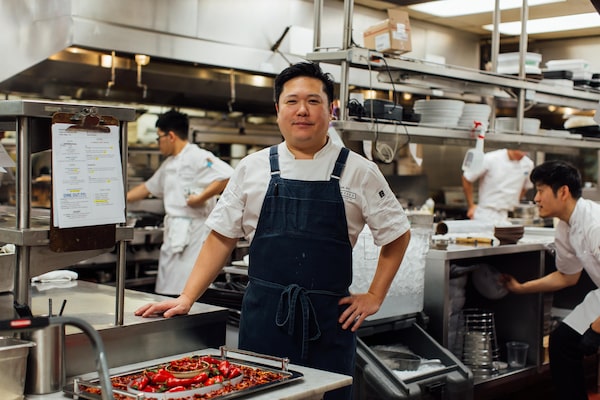
Executive chef Roger Ma in the kitchen of Boulevard Kitchen & Oyster Bar, an upscale restaurant in Vancouver that specializes in seafood and West Coast fare.Jackie Dives/The Globe and Mail
Spicy foods – curries, Sichuan hot pot, jerk chicken – have been around for centuries in countries such as Ethiopia, China, Thailand, India and Jamaica. In North America, celebrity chefs such as David Chang – who slings his branded Momofuku noodles and chili crunch to the masses – and Marcus Samuelsson, known for his hot honey yardbird, have been bringing their appreciation for heat to restaurant tables.
Fine diners are increasingly willing to fire up their palates, including here at home.
There’s been a relatively recent shift in the taste preferences of Canadians, says Dr. Sylvain Charlebois, senior director of the Agri-Food Analytics Lab at Dalhousie University in Halifax. He conducted a study in April, 2023 that looked at how often people consume spicy food as part of their regular diet: 51 per cent of respondents said once a week or more.
Anecdotally, he says it’s a significant increase compared with five or 10 years ago.
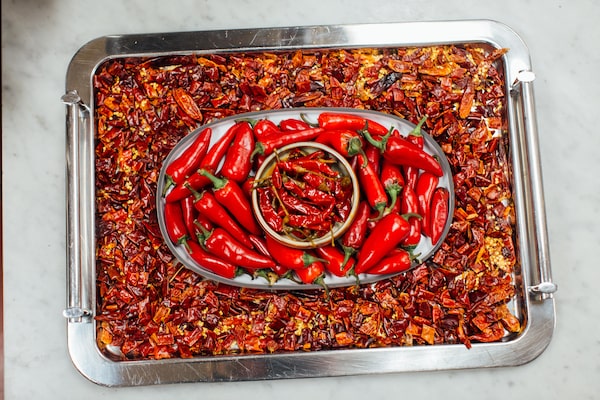
Calabrian chilies sit in the centre of this dish, used by chef Ma for Boulevard's seafood linguine. Its flavor is unique and savory, with a hint of fermented flavour. The middle layer of fresh Fresno chilis is used most often as a fresh pickle for garnishing dishes. The dried chilis are Yunan red chilis, used in marinades and brines.Jackie Dives/The Globe and Mail
In a restaurant setting, these fiery dishes are usually served in casual or fast-food spots. You’ve got the local wing joints, Mexican taco shops, Nashville hot chicken takeout, and even McDonald’s, which introduced a hot honey crispy chicken sandwich.
“Food service to me is always a strong indicator. As soon as you start seeing chains like McDonald’s changing their menus and adding spicy options, that tells you something,” Charlebois says. “It tells you how a market is changing.”
Roger Ma, executive chef of Boulevard Kitchen & Oyster Bar, an upscale restaurant in Vancouver that specializes in seafood and West Coast fare, has noticed the market shift. “I think it just trickles down to fine dining,” he says. “I have been cooking for 20 years. From the beginning [of my career] until now, I’d definitely say that the use of chilies and spice is a lot more frequent.” Ma points to several dishes on the Boulevard menu where he incorporates spicy flavours: seafood linguine with a Calabrian chili butter sauce and breadcrumb, oysters served alongside a Thai chili espuma, and seared scallops with a red curry sauce. “And you know, on occasion, I’ll get that linguine [order] where they want it extra-hot,” he says. “It does happen.” Emily Wells, chef and owner of The Mill in New Glasgow, a seafood- and steak-focused restaurant in PEI that’s open from June to December, also has a variety of fiery dishes on her menu. There’s a Pad Thai dish that has Indonesian sambal oelek in the sauce and is served alongside Sriracha, as well as steamed mussels that are served in a spicy Asian-style broth.
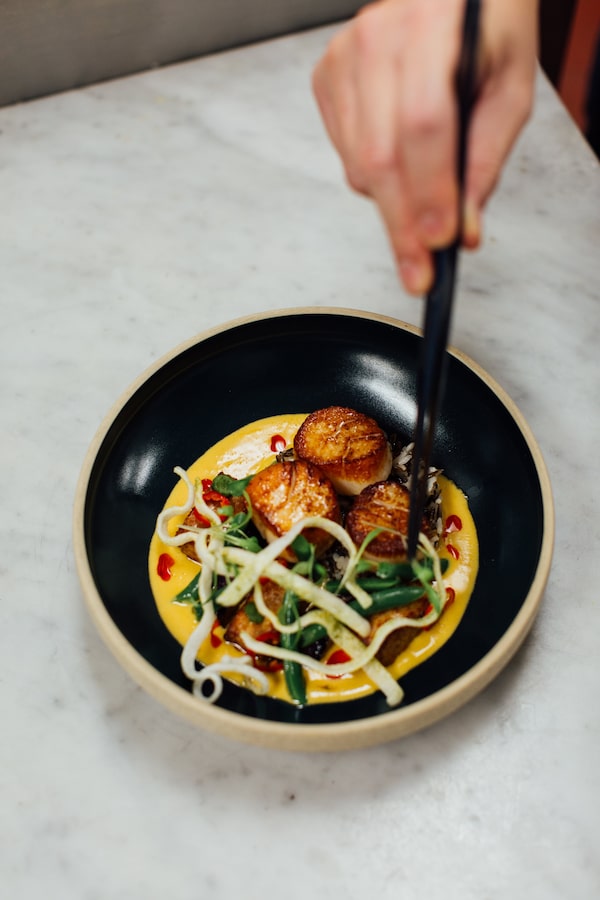
With Boulevard's scallop dish, the Thai inspired curry sauce starts with a red curry paste, and Thai chilis are layered in for a bit of heat to round the palate. The plate is garnished with Fresno chili pickles for a bit of sweetness, acidity and subtle heat to complement the sauce.Jackie Dives/The Globe and Mail
“When we first started making [this Pad Thai] in 2003, there were far more diners who complained about the heat or spice than there are now,” Wells says. “And 20 years ago, it was much harder to find suitable ingredients and spices in a small town or city in Canada, but now they’re readily available.” Both chefs and Charlebois agree the shift is thanks in part to a growth in immigration and changing age demographics. “Because of immigration, a lot of people come [to Canada] with this culinary wealth along with them. Introducing Canadians to new flavours,” Charlebois says. And younger generations are looking for more spicy food options. “They grew up with a different palate,” Charlebois says.
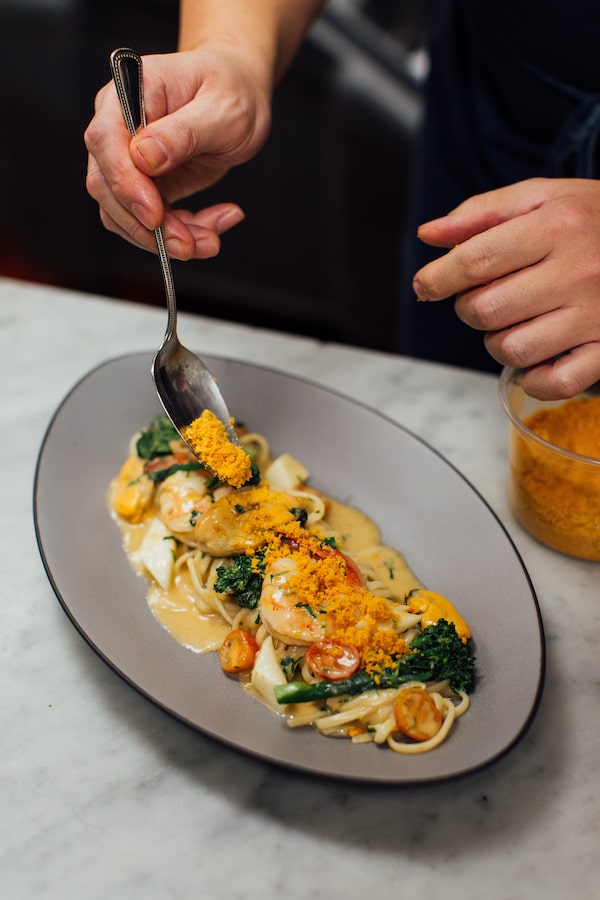
Boulevard uses Calabrian chili to season the sauce of its seafood linguine, giving it a mouth-watering umami. The breadcrumbs are also toasted with the chili, adding texture and a bit of heat.Jackie Dives/The Globe and Mail
This can be attributed to a more diverse selection of restaurant availability as they were raised, and greater potential access to travel, which facilitates trying new cuisines. “I’ve been teaching for 25 years. Back then … you’d ask a class of undergraduates, ‘How many people have their passports?’ And it was probably not even a third. And now most of them do.”
Ma says social media has helped demystify certain spices and ingredients, and Charlebois adds that the taste preferences of younger generations matters because Gen X and boomers are “starting to become less economically influential.”
Of course, there are several types of higher-end restaurants where their food is traditionally known for their spices, such as Indian or Thai. Ma says there are often misconceptions with certain Asian cuisines that “it’s just all about the spice,” but he points out he has Thai friends who bring little bottles of hot sauce when they eat at Western-style restaurants because the food isn’t spicy enough for their palates. The recent market shift in Canada means these restaurants have an opportunity to serve spicier dishes to meet such demands. The key to incorporating spicy flavours into higher-end kitchens? Ma says to be subtle. “Use it more like a seasoning or condiment.”
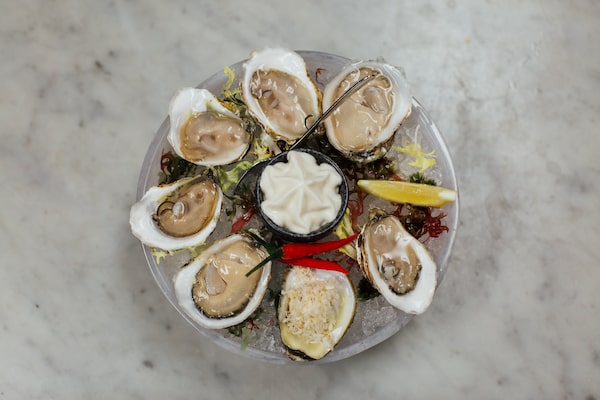
Boulevard serves its oysters with 'classic' Thai chili espuma. It’s a Thai-inspired condiment with red Thai chilis, lime juice, palm sugar and fish sauce. It’s a little sweet, sour and spicy.Jackie Dives/The Globe and Mail
For example, he loves to pickle little Fresno chilies. “It’s like a cousin of a jalapeno, but not as spicy,” he says. He slices them thin and serves them with a scallop crudo or as a garnish with octopus and uses the leftover vinegar to make vinaigrettes and sauces.
“The subtlety of the heat is there, but it’s not there to kill you. It’s really there to kind of entice your palate.”
One in a regular series of stories. To read more, visit our Inspired Dining section.